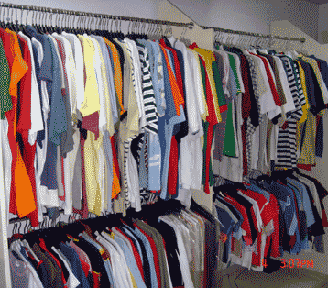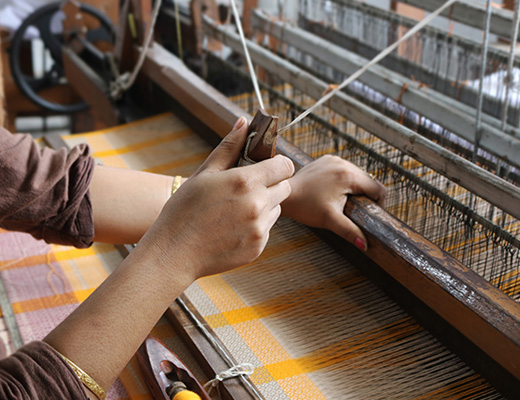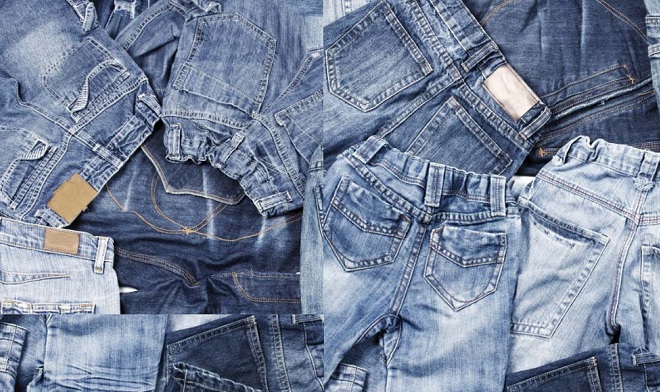
A New Zealand-based Woolyarns produces an exclusive range of luxury yarn brand for both textile manufacturing and hand knitting markets internationally.It is Woolyarns’ Zealana hand knitting yarn. Zealana uses luxuriously soft and lightweight blended Brushtail possum fiber. It is spun into beautiful yarn that is sought after by handknitters.
Brushtail possum fiber is super soft and prized for its lightweight warmth and breathability. Possum for Zealana yarn is collected from a small number of carefully selected regions, only at certain times of the year. It is then blended with the finest merino or cashmere to guarantee softness and consistency in this high end luxury yarn. Woolyarns uses 40 to 50 tons of possum fiber annually across its product range. This is equivalent to the fiber from more than one million possums.
Woolyarns was established 68 years ago. For several decades, it provided yarns only for commercial purposes. In the early 1990’s, it pioneered the use of possum fiber mixed with wool. In 2006, Woolyarns released Zealana, its first hand knitting and crochet yarns.
Woolyarns offers a select niche range of bespoke yarns, in addition to its classic range. Luxury yarn brands in Woolyarns’ portfolio of bespoke yarns are Zealana (hand knitting), Perino (knitwear, apparel, hosiery yarns), INZpire (carpet yarns) and Callibra (sourced yarns).
As financial results reporting season gains momentum, investors in textile sector are looking to splendid growth in profitability, which would probably match the financial year 2013 performance. Profitability of textile (sample firms) scaled four-fold to Rs22.8 billion in three-quarters of financial year 2013 (9MFY13) as against Rs4.4billion in the same period last year.
“Last fiscal year, FY-’13, was one of the better years for Pakistan textile sector in terms of sales and profits which was also reflected in more than 100per cent price performance of our sample listed textile firms with market capitalization of over Rs25 million,” says ZeeshanAfzalof Topline Securities.
Though shortage of power remained the perennial problem, especially in winter, the textile companies’ jump in profits by 400per cent was mainly attributed to stable cotton prices and strong regional demand.
Moreover, continuous depreciation of rupee against the dollar and cheaper financing also contributed to hefty earnings growth. In FY-’13, Pakistan exported $13bn worth textile products, up by 5.9per cent in dollar terms but represented improvement by 14.7per cent in local currency due to the drop in value of the rupee.
The growth in exports was attributed mainly to imposition of cotton floor price in China that encouraged Chinese textile manufacturers to import more yarn and grey cloth instead of converting yarn into costly local cotton.As a result, Pakistan’s yarn and grey cloth exports increased by 24per cent and 10per cent to $2.2billion and $2.7billion, respectively, in FY-’13. The latest results of textile sector are expected to show continuous growth in export for FY-’14 on the back of sustained textile demand from China and substantial depreciation in local currency.
However, analysts caution that much would depend upon international cotton prices, though major volatility was unlikely to be seen in local cotton prices in FY-’14. The encouragement was based on estimates of Cotton Crop Assessment Committee (CCAC) which estimated Pakistan’s cotton production at 13.25million bales in FY-’14, slightly higher over the 13.0 million bales produced by the country in FY-’13.
Exports and profits of the sector could also improve due to expected Generalised System of Preferences (GSP Plus) status from EU, as lower import duties would provide Pakistan a competitive edge in international markets. “Further operating environment of the textile sector may see further improvement in low interest rate scenario,” analysts said, the caveat, however, being the all-important improvement in energy situation.
The 2013 ThéophileLegrand International Prize for Textile Innovation will be awarded on October 5 at ValJolyEppe-Sauvage resort.The ThéophileLegrand Foundation – Institut de France was created in 2007 by Christian Cambier, a descendant of ThéophileLegrand. ThéophileLegrand is the founder of the wool industry in Fourmies, France.
Since 2009, two ThéophileLegrand awards are granted annually. With a value of €18,000, these two awards celebrate two distinguished researchers and/or students who have created original material, fiber or fabric in the field of technical textiles; or an innovative textile design and/or a new textile industrial production technique.
The goal is to foster innovation, research, and imagination by showcasing emerging technical and industrial creations. In 2009, the prize was awarded to AurélieCayla for inventing a smart textile that senses specific temperatures. In 2011 Munir Ashraf won it for creating a self-cleaning and antibacterial textile. Last year, Pierre-Alexandre won the prize for a decontaminating textile to treat air and water.
An innovative textile design project can be submitted for consideration providing the entrant or team of researchers is able to prove that the project, product and the invention of newly used elements are their own work. Selection criteria are the same for inventors of new textile fabrics as well as innovators of new processes of textile production. All entrants are judged on their creativity, originality, innovation to the field and the project’s ability to be industrially reproduced.
Turkey’s textiles exports, excluding apparels, has seen an increase if 6.6 percent in the first six months of 2013 compared to the corresponding period of last year.Turkish firms exported $4.164 billion worth of textiles to other countries during January to June 2013, accounting for 5.6 percent of total Turkish exports.
Segment-wise, woven fabric exports earned $1.436 billion, followed by knitted fabric which fetched $845.6 million. Yarn exports from Turkey were worth $838.5 million, while fiber exports amounted to $307.8 million from January to June 2013. Exports to the EU accounted for 45 percent of all Turkish textile exports during the six-month period.
Turkish textile exports rose to $7.75 billion in 2012 from $7.7 billion in 2011. Turkey exported textiles worth $542.2 million to Russia, $418.2 million to Italy, and $213.8 million to Germany during the first quarter of 2013.
US federal agencies have been banned from purchasing garments from Vietnam after the US Department of Labor's Bureau of International Labor Affairs said it believes clothing is being produced using forced or indentured child labour.
The Bureau of International Labor Affairs said based on the evidence it reviewed there are more than isolated cases of forced child labour in garment production. It noted these cases predominantly occur in small unregistered workplaces.
"In many countries, laws, policies and programs that are effective for registered factories are less effective at reaching children and other exploited workers in unregistered, more hidden work settings, and this appears to be the case in Vietnam's garment industry," the ruling said.
It added that in January this year, two Department of Labor officials visited the country to assess the current situation of forced child labour in Vietnam, with a focus on the garment sector, to gather additional information about the efforts and systems in place to combat this problem. Following meetings, the officials confirmed that most, but not all, child labour in the garment sector occurs in small, unregistered workshops.
"The visit confirmed that systematic monitoring of forced or indentured child labour in the garment sector is limited and largely confined to the larger, registered factories. There is no evidence of systematic monitoring of child labour in smaller, unregistered workshops," the ruling said.
India has eased import norms on certain varieties of wool to help the domestic industry in sourcing the raw material.The Indian wool importing industry wanted the removal of the mandatory requirement of a ‘No Objection Certificate’ for wool imports as it hindered supplies and was hurting the sector.
Of course, certain varieties of wool still need not require an NOC. This move is expected to aid the smooth inflow of wool imports, help the domestic industry engaged in value addition, making carpets, woolen clothing, garments and other woolen products and help in increasing the country's exports.
Wool importers have been complaining of difficulty and harassment on quarantine issues for the last three years. Some quarantine officers and custom officers had stopped the clearance of wool imports seeking an animal quarantine clearance or a NOC. The imported wool is being used for producing exportable products and hence, this step, adversely affected domestic value addition and exports.
The apparel sector has set itself a target of $5 billion in 2015 through garment exports.“A further $1 billion is targeted from the emerging new markets in China around that time, together it will make the apparel sector worth nearly $7 billion before the end of 2020,” Tuli Cooray, Secretary-General of JAAF said. President Mahinda Rajapaksa in his capacity as Finance Minister recently released a gazette notification titled ‘Commercial Hub Regulation No: 1 of 2013’, which will be applicable to all new enterprises established or incorporated in Sri Lanka.
Speaking about its benefits the apparel industry could accrue under this new regulation, Cooray said that the sector alone would anticipate an additional foreign exchange turnover of $1billion by year 2018.“We will mobilize all our existing resources to promote the new opportunity that has been opened and significantly improve our participation in reinforcing the national economy”, the Secretary-General added.
“The JAAF has played a vital role in the formulation of new regulation and actively participated in most of the consultative processes capitalizing on the government's ‘Open Forum’ policy where input from all shades of stakeholders were considered before the CHR was introduced,” he added. When the Bill for the introduction of Commercial Hub regulation was introduced in Parliament, it was challenged in the Supreme Court through a petition in the mid part of this year and the JAAF collective stood by the Bill and intervened as an interested party and cited its implementation justifiable as it was in the best interest of the country.
“The five year Strategic Plan of the JAAF which was rolled out in 2010 has outlined the significance of enhancing its present role as a manufacturing and supplying garments to a totally integrated solution provider for the international apparel sources, facilitating end to end solutions starting from research and development, supply chain services, logistics etc. Three years on, our achievement is significant,” he stated.
 The Union Budget 2013-14 presented by finance minister P Chidambaram today, have cheered the textiles and garments industry immensely. The reason: the government has finally agreed to unanimously remove the excise duty on readymade garments imposed two years ago.
The Union Budget 2013-14 presented by finance minister P Chidambaram today, have cheered the textiles and garments industry immensely. The reason: the government has finally agreed to unanimously remove the excise duty on readymade garments imposed two years ago.
As A Sakthivel, Chairman, AEPC opines, “We thank the FM for accepting the demand of the industry to restore ‘zero excise duty route’ for cotton and manmade sector (spun yarn) at the yarn, fabric and garment stage. We also thank him for accepting the demand of the industry, for which lakhs of workers, entrepreneurs extend their compliments.” Sakthivel also appreciated the fact that the ministry shall continue TUFs in 12th Plan with an outlay of Rs 2,400 crores. The creation of apparel parks within SITP and Rs 10 crores allocation will go a long way in increasing exports of value added textile chain.
The industry also welcomed the allocation of Rs 1,000 crores for skill development and hopes that substantial allocation would be made for the readymade garments sector, which allows immediately absorption of workers, displaced from agriculture and undertake lot of responsibility of the government in solving employment problem.
On behalf of the domestic garments industry, CMAI welcomed the removal of excise duty on branded garments. “The industry, as so correctly described by the FM, is in the throes of a crisis, and this lifeline was desperately needed to bring back some vigor to this beleaguered sector. The reversal to the optional route not only provides zero per cent duty to the industry, it will also provide some form of protection to the domestic industry from cheap imports. Moreover, it will encourage foreign retailers setting up shop in India to manufacture in India, rather than import from outside,” said Rahul Mehta, President CMAI.
Experts point out this move will revive consumer sentiment as prices will reduce, and minimize the grey market. “It’s good for the whole value chain as consumer sentiment will revive when prices come down,” opines Aamir Akhtar, CEO, Arvind Lifestyle Fabrics. Agrees Rajiv Dayal, MD, Mafatlal Denim as he says “removal of duty will lower MRPs of garments and augurs well for the industry.” It will provide much needed boost to brands and manufacturers to scale up and move to the organized sector. With the industry going back on a growth path, one of the biggest positive fallout will be increased employment opportunities, especially for unskilled and semiskilled workers, and more specifically for women workers.
Ramesh Poddar, Chairman & MD, Siyaram Silk Mills feels, the Budget has brought a ray of hope for the industry. “We have been demanding this for a long time and finally our appeals have been heard. This move will ultimately benefit the consumer and help the industry grow. We also appreciate the fact that the government has allocated Rs 500 crores for environmental issues in the textile industry. This will help companies be responsible towards the environment and help them reduce their carbon footprint.”
Manish Mandana MD, Mandhana Industries says the whole industry is relieved that excise will go. “It’s fantastic news. People are thrilled because the excise hit their business. Paperwork became difficult. This is a huge relief for retail and clothing companies. About Rs 500 crore has been allotted for environmental issues in the textile industry. This is good and that’s what we need moving forward. Infrastructure will get better with this. About Rs 1,000 crores will be allotted to enhance youth skills. This is also a fantastic move. In India we have so much talent and potential that can help the industry grow this move will help bring in fresh blood in the industry.”











